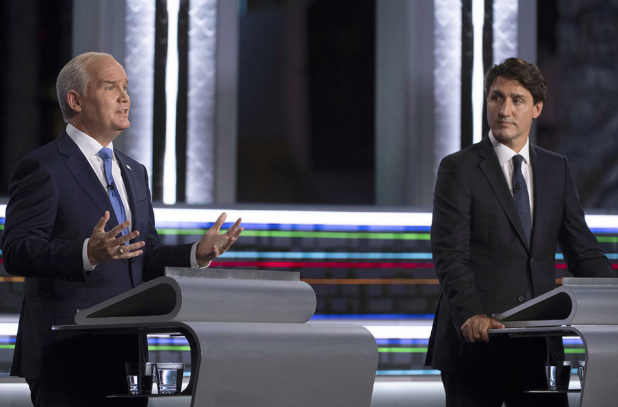
By Michael Ge
On September 20th, Canadians headed to the polls to vote in the 44th Canadian federal election. Prime Minister Justin Trudeau called the election on August 15th hoping that his Liberal Party would win a majority of the seats in the House of Commons. Trudeau had been ruling with a minority government following the 2019 election where his Party won the most seats but did not win the 170 seats required for a majority.
The main parties contesting the election were the center-left ruling Liberal Party led by Prime Minister Justin Trudeau, the right-wing Conservative Party led by Erin O’Toole, and the left-wing New Democratic Party (NDP for short) led by Jagmeet Singh. The Quebec nationalist party, Bloc Québécois, led by Yves-François Blanchet, Green Party led by Annamie Paul, and far-right People’s Party led by Maxime Bernier also contested the election.
By calling the election, Trudeau was taking a gamble, but he had ample reason to be confident. Going into the election, his Liberal Party had enjoyed a large lead in the polls due to his government’s effective response to the COVID-19 pandemic. Unfortunately for Trudeau and to the delight of his opponents, this lead evaporated and the election turned into a dead heat between the Liberals and the Conservative Party with the left wing NDP polling a distant third. With COVID-19 taking center stage, voters questioned why Trudeau would call an election projected to cost the taxpayer more than 600 million while a pandemic was still raging. The parties primarily campaigned on combating COVID-19 and the best ways to recover from it. Healthcare, the economy, housing, and climate change were also issues that were addressed by the parties.
On election day, the Liberals won 159 seats, a net gain of four seats, and 32.62% of the popular vote, the Conservatives won 119 seats, a net change of zero, and 33.74% of the popular vote, the NDP won 25 seats, a net gain of one, and 17.83% of the popular vote. Bloc Québécois won 33 seats, a gain of one, and 7.64% of the popular vote, the Green Party won two seats, a net change of zero, and 2.33% of the popular vote, and the People’s Party won zero seats despite winning 4.94% of the popular vote. Neither Paul nor Bernier were elected to the House of Commons.
Although Trudeau’s Liberals failed to reach the 170 seat threshold for a majority, they had managed to win a third consecutive election under Trudeau’s leadership and performed well in Vancouver and the Toronto suburbs of the York Region. Despite winning the popular vote again and a good showing on the Liberal-leaning Atlantic Coast, the Conservatives once again failed to win an election. The NDP had failed to replicate the electoral success of its beloved late leader Jack Layton, but the Liberal Party will have to rely on the support of the NDP to get legislation passed. Bloc Québécois showed that there was still an appeal for Quebec independence. The Green Party’s poor showing wiped out years of progress under former leader Elizabeth May, and Annamie Paul has since announced that she will resign as leader. Lastly, Maxime Bernier and his People’s Party suffered a humiliating defeat by winning zero seats, but there is no doubt that many will be concerned that Bernier and his party’s far-right positions won hundreds of thousands of votes. The election can be summed up with the fact that more than 600 million in taxpayer dollars had been spent on a gamble that changed little.
